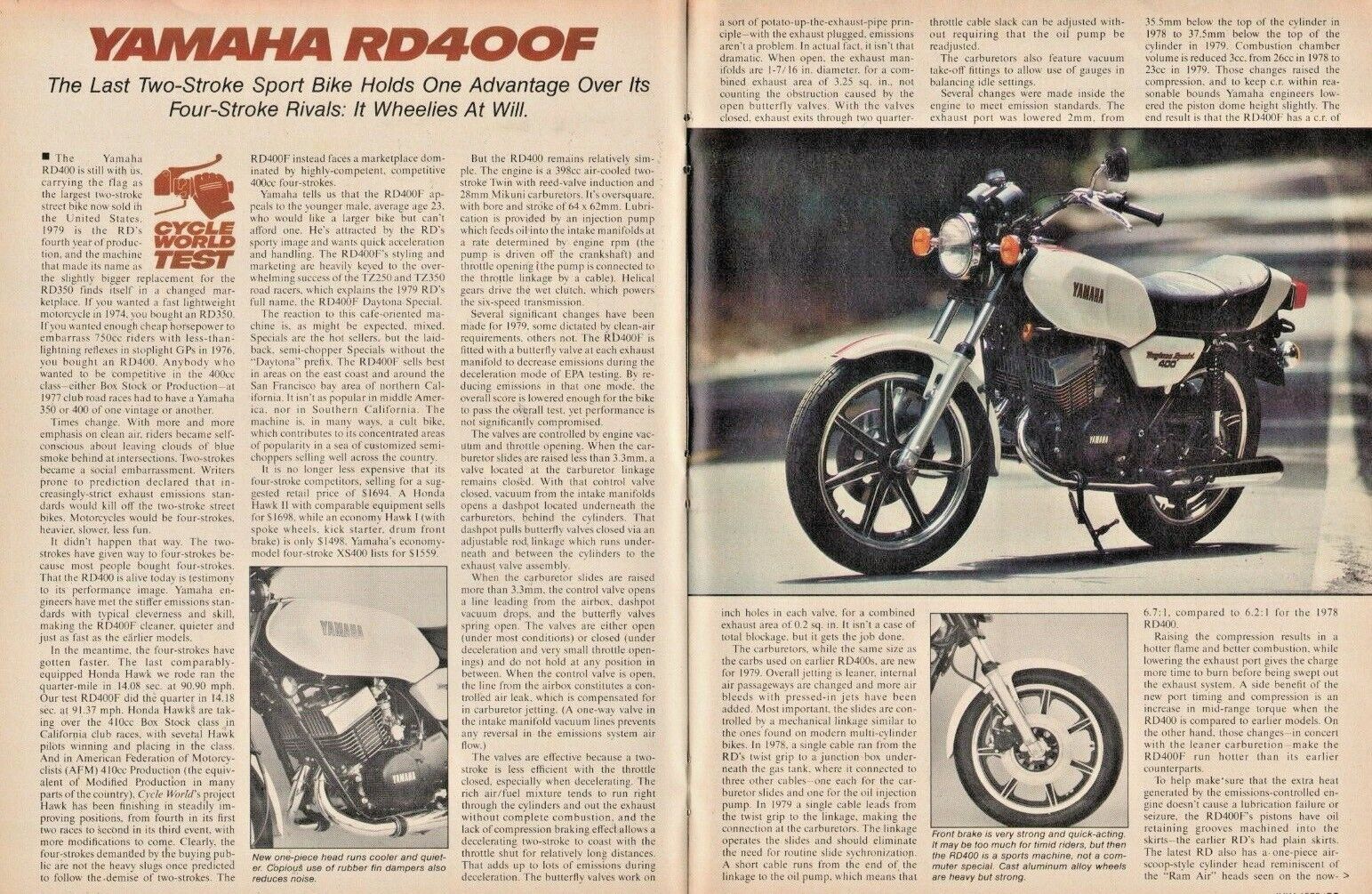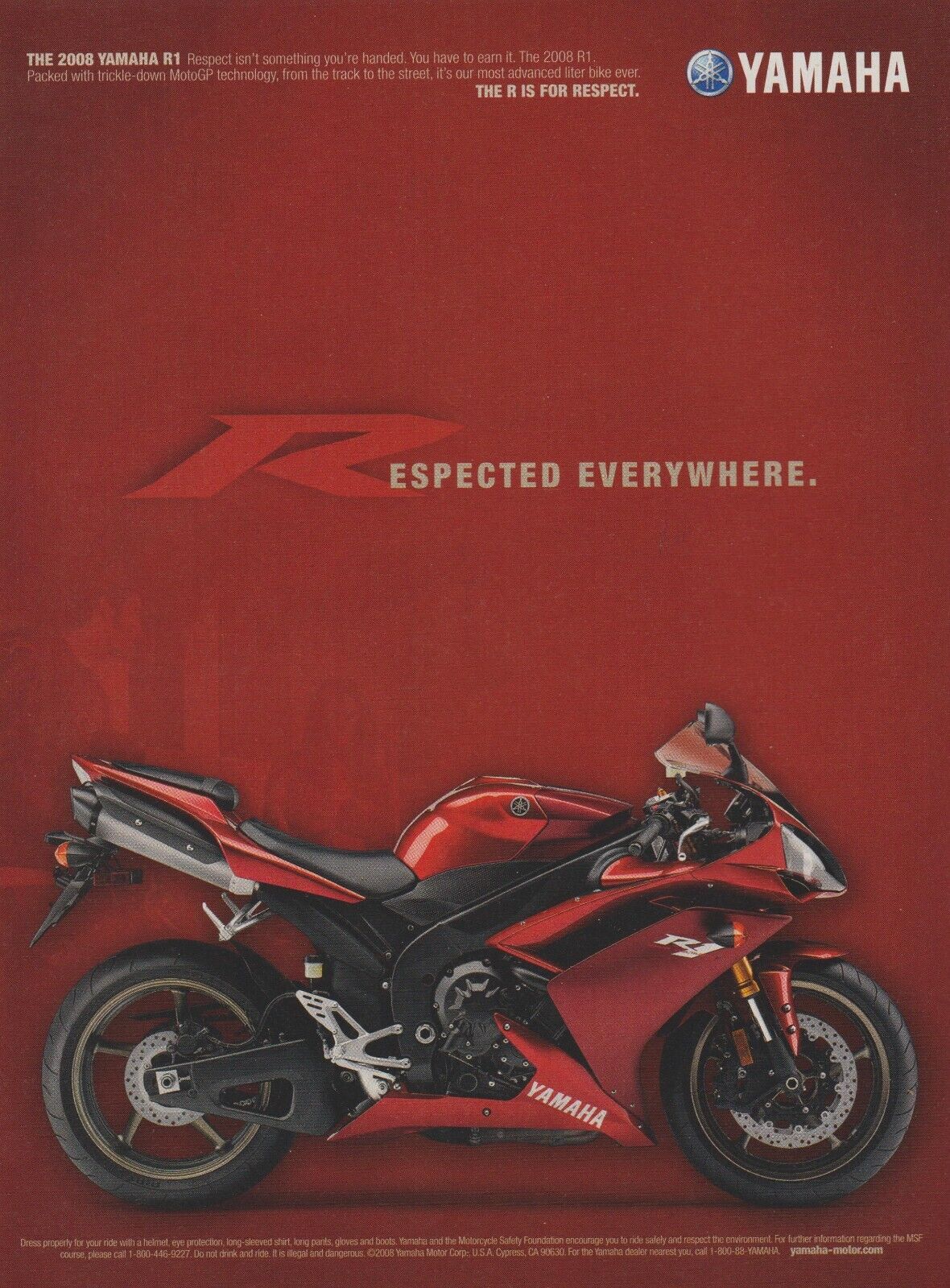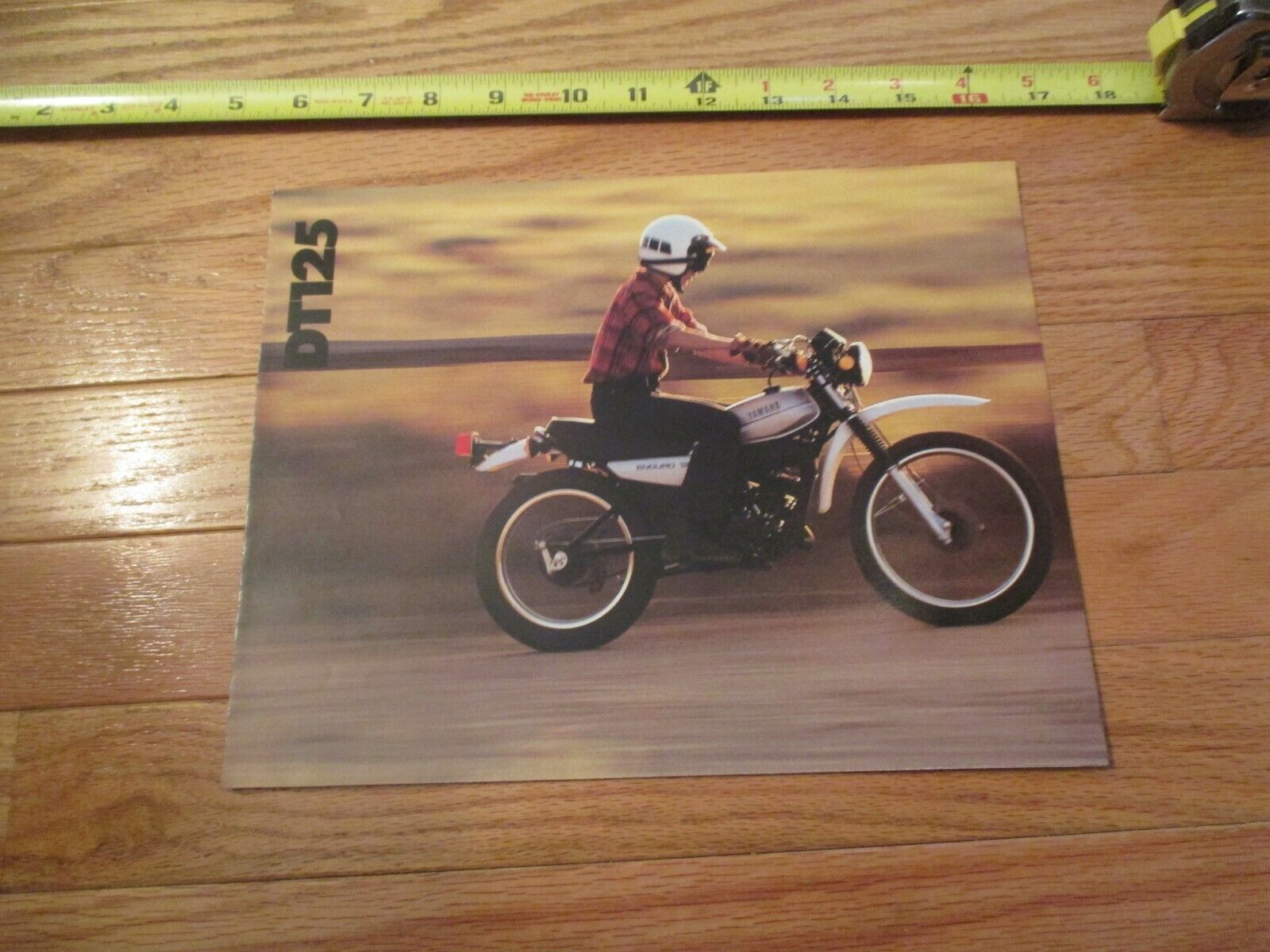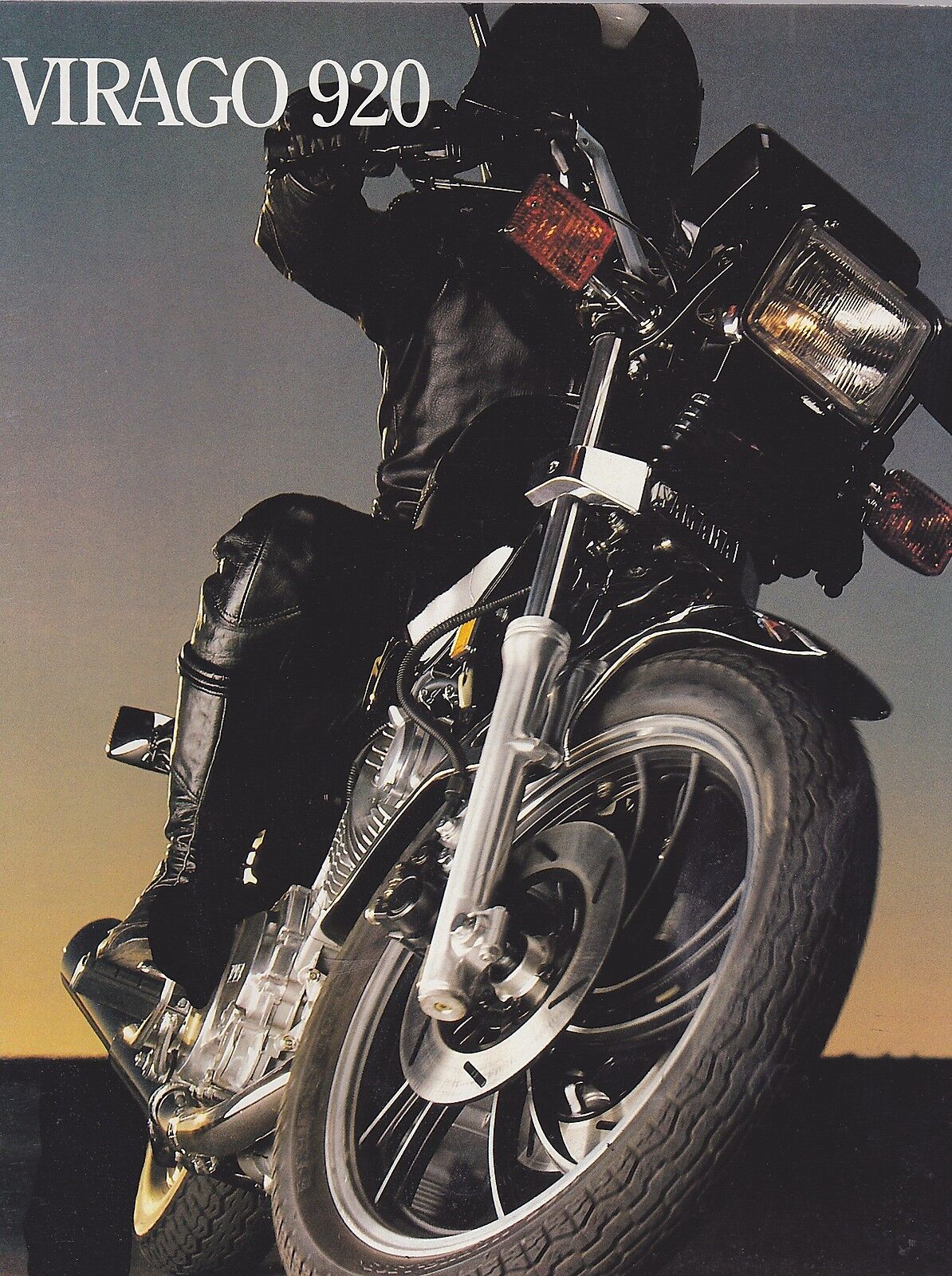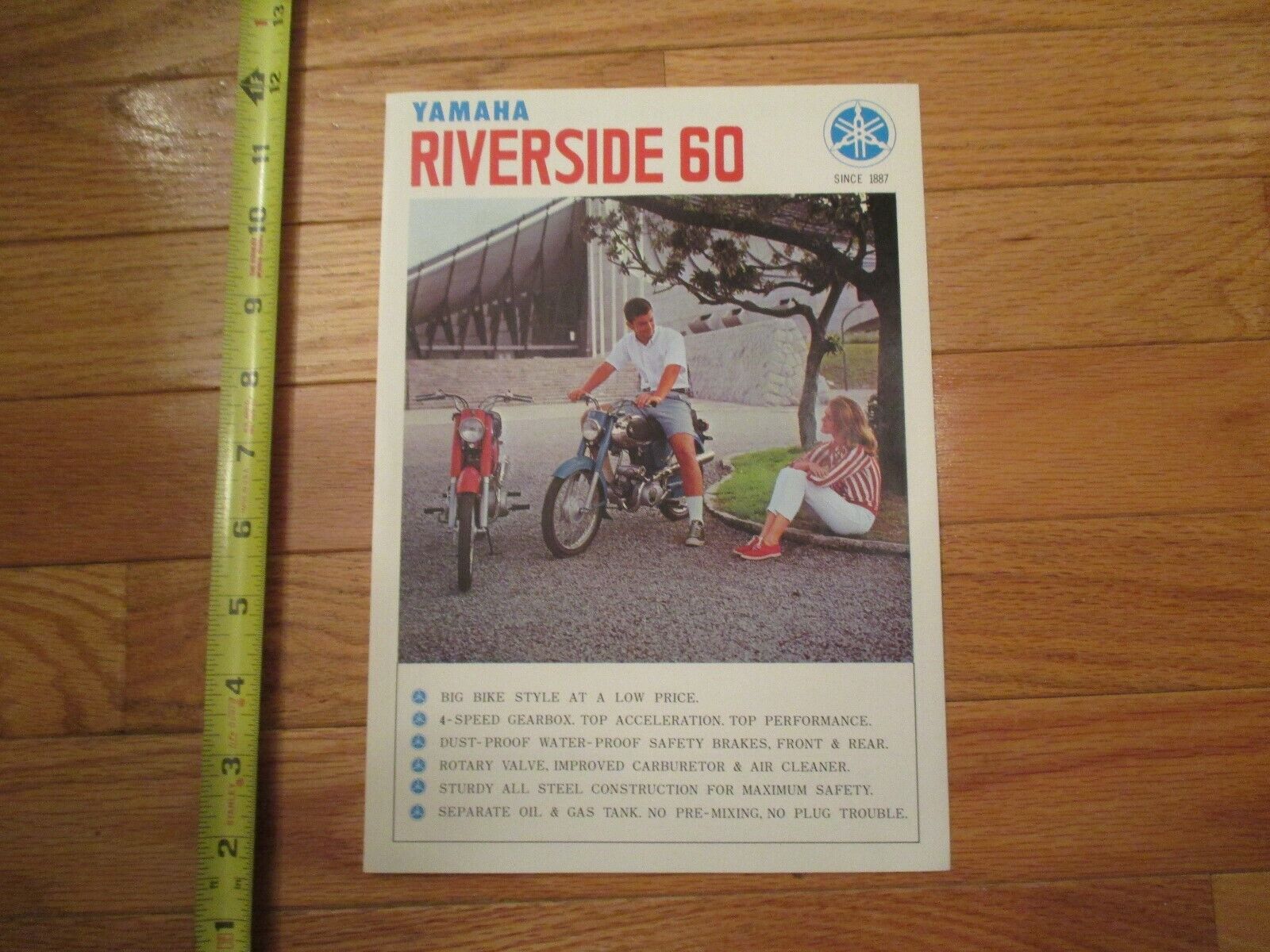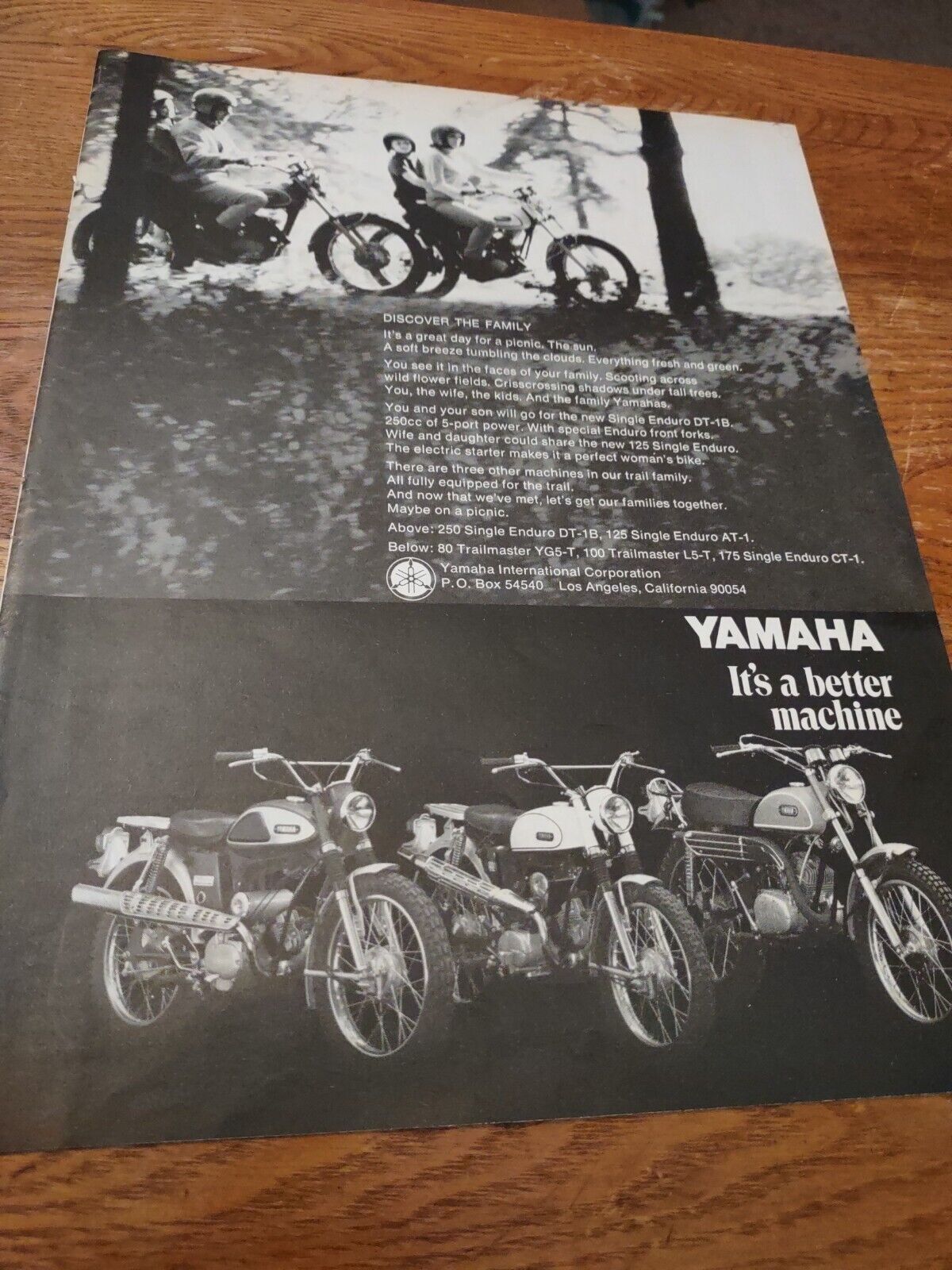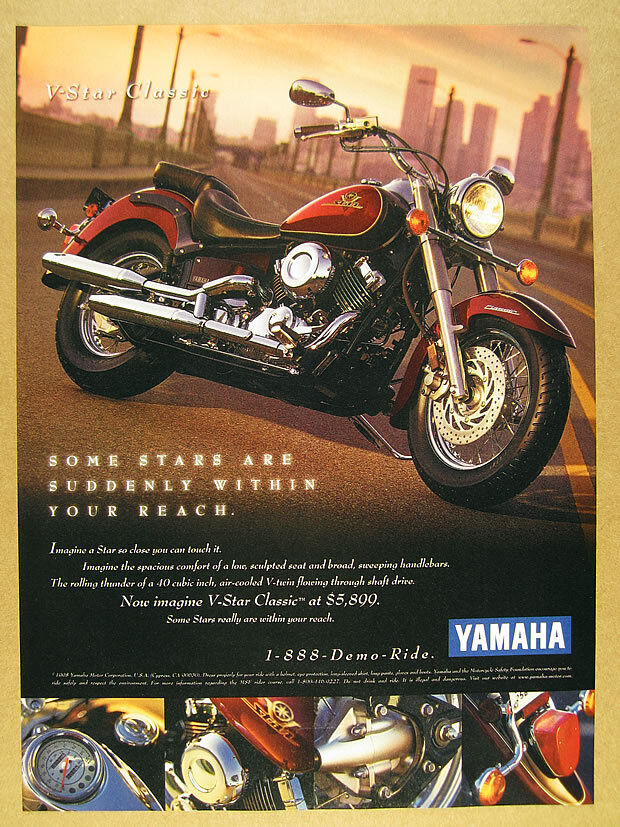-40%
1979 Yamaha RD400F - 7-Page Vintage Motorcycle Road Test Article
$ 7.3
- Description
- Size Guide
Description
1979 Yamaha RD400F - 7-Page Vintage Motorcycle Road Test ArticleOriginal, Vintage Magazine article
Page Size: Approx. 8" x 11" (21 cm x 28 cm) each page
Condition: Good
■ The Yamaha
RD400 is still with its.
carrying the flag as
the largest two-stroke
street bike now sold ih
the United Slates.
1979 is the RD's
fourth year of produc-
tion. and the machine
that made its name as
CYCLE
WORLD
TEST
the slightly bigger replacement for the
RD350 finds itself in a changed mar-
ketplace. If you-wanted a fast lightweight
motorcycle in 1974. you bought an RD350.
If you wanted enough cheap horsepower to
embarrass 750cc riders with less-than-
lightning reflexes in stoplight GPs in 1976.
you bought an RD400. Anybody who
wanted to be competitive in the 400cc
class—either Box Stock or Production—at
1977 club road races had to have a Yamaha
350 or 400 of one vintage or another.
Times change. With more and more
emphasis on clean air. riders became self-
conscious about leaving clouds of blue
smoke behind at intersections. Two-strokes
became a social embarrassment. Writers
prone to prediction declared that in-
creasingly-strict exhaust emissions stan-
dards would kill off the two-stroke street
bikes. Motorcycles would be four-strokes,
heavier, slower, less fun.
It didn’t happen that way. The two-
strokes have given way to four-strokes be-
cause most people bought four-strokes.
That the RD400 is alive today is testimony
to its performance image. Yamaha en-
gineers have met the stiffer emissions stan-
dards with typical cleverness and skill,
making the RD400F cleaner, quieter and
just as fast as the earlier models.
In the meantime, the four-strokes have
gotten faster. The last comparably-
equipped Honda Hawk we rode ran the
quarter-mile in 14.08 sec. al 90.90 mph.
Our test RD400F did the quarter in 14.18
sec. al 91.37 mph. Honda HawkS are tak-
ing over the 410cc Box Stock class in
California club races, with several Hawk
pilots winning and placing in the class.
And in American Federation of Motorcy-
clists (AFM) 410cc Production (the equiv-
alent of Modified Production in many
parts of the country). Cycle World's project
Hawk has been finishing in steadily im-
proving positions, from fourth in its first
two races to second in its third event, with
more modifications to come. Clearly, the
four-strokes demanded by the buying pub-
lic are not the heavy slugs once predicted
to follow the demise of two-strokes. The
RD400F instead faces a marketplace dom-
inated by highly-competenl. competitive
400cc four-strokes.
Yamaha tells us that the RD400F ap-
peals to the younger male, average age 23.
who would like a larger bike but can't
afford one. He’s attracted by the RD’s
sporty image and wants quick acceleration
and handling. The RD400F's styling and
marketing are heavily keyed to the over-
whelming success of the TZ250 and TZ350
road racers, which explains the 1979 RD's
full name, the RD400F Daytona Special.
The reaction to this cafe-oriented ma-
chine is. as might be expected, mixed.
Specials arc the hot sellers, but the laid-
back. semi-chopper Specials without the
"Daytona" prefix. The RD400F sells best
in areas on the east coast and around the
San Francisco bay area of northern Cal-
ifornia. It isn't as popular in middle Amer-
ica. nor in Southern California. The
machine is. in many ways, a cull bike,
which contributes to its concentrated areas
of popularity in a sea of customized semi-
choppers selling well across the country.
It is no longer less expensive that its
four-stroke competitors, selling for a sug-
gested retail price of SI694. A Honda
Hawk II with comparable equipment sells
for 98. while an economy Hawk I (with
spoke wheels, kick starter, drum front
brake) is only S1498. Yamaha's economy-
model four-stroke XS400 lists for S1559.
New one-piece head runs cooler and quiet-
er. CbpiouS use of rubber fin dampers also
reduces noise...
13702-AL-7907-08
